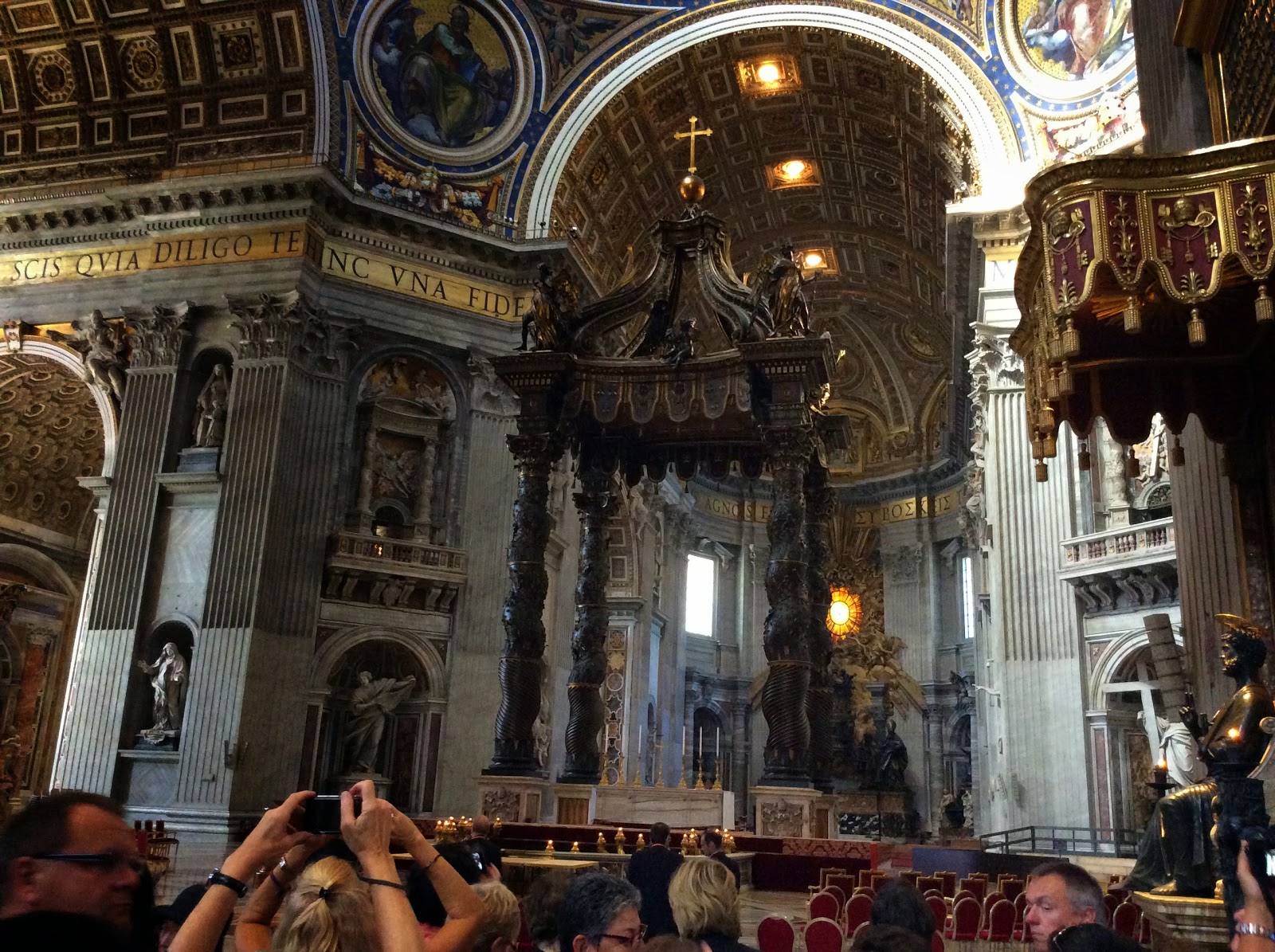Hello everyone, for the last time on this trip! Today, we concluded our trip with our capstone visit to the Vatican City. The agenda was to see and learn of the Sistine Chapel, Basilica of St. Peter, and St. Peter's Square. The Vatican City is the seat of the Roman Catholic Church and is considered an independent state with the Italian state. Inside the Vatican City, we went through long lines and started in the Vatican museum, then proceeded to a courtyard where our tour guide explained what we were about to see in the Sistine Chapel. The reason why is because she was not allowed to do any explaining for restrictions to be silent in the Chapel. Also we were not allowed to take photos inside the Chapel.
 |
| Scale model of the Vatican City |
Here is photo of the incredibly decorated hall that leads to the Sistine Chapel.
Next, we were led from the chapel into the Basilica of St. Peter. This was INCREDIBLE. The Basilica of St Peter is the largest church building in the world in the Roman Catholic Church.
 |
Entering the basilica, you see the dark wooden structure called Bernini's Canopy, and a white altar with six candles and a cross on a stands.
Afterwards, we exited St. Peter's Basilica and down into St. Peter's Square, a site familiar to people around the world.
Leaving St. Peter's Square, we had one more site to visit, the Catacombs of San Sebastiano. These catacombs are a network of underground tunnels that had over 100,000 tombs. The Catacombs were the first burial location of the apostles Peter and Paul, before they were eventually relocated to their current tombs, with Peter entombed beneath the Basilica of St. Peter. We were not allowed to take pictures down in the catacombs either. The other significance to the catacombs is the early church met there to bury their dead and hold services there in the early years.
Tonight, we rest, and early tomorrow morning, we begin our journey back to the U.S. In reflection, we have all learned lot, experienced a lot, and shared a lot, but more importantly grew closer to God in Christ and to each other. Thank you for allowing me to share this incredible 14 day journey with you all!
May the Lord bless you and keep you!
Sincerely,
Ying




















































